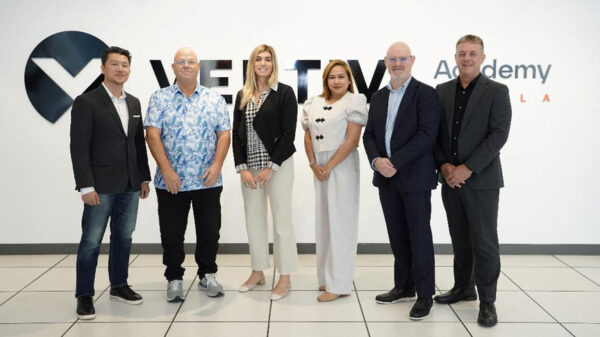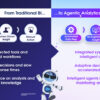In the face of a global pandemic like COVID-19, a once-in-a-lifetime event, the speed at which researchers can drive discovery is a critical factor in the search for a cure. Researchers are running experiments in bioinformatics, epidemiology, and molecular modeling that can range from millions to trillions of bits of individual pieces of data. Often comprised of multiple layers of multiple calculations, these experiments could take years, if not lifetimes, to complete if worked by hand.
Recognizing that researchers would need access to an unprecedented amount of computing power to find a cure, IBM partnered with the White House Office of Science and Technology Policy to launch the COVID-19 HPC Consortium to give researchers access to some of the most powerful supercomputers in the world.
It is the largest public-private computing partnership ever created.
What started as a series of phone calls to five days later, more than two dozen partners came on board. Many who are typically rivals, including Microsoft, Google, Amazon, Hewlett Packard Enterprise, as well as the national labs, NASA, NSF, and universities. Without any large contracts or anything of the kind, this group came together in a way to both share resources and manage a process of expediting the scientific proposals that came into the consortia and match it to the best resources.
The Consortium has now been running for over two months, with more than 56 teams of scientists have been matched with a supercomputer for free looking for a cure using over 430 petaflops of computing power have been aggregated by 40 partners.
Most recently, members of the Partnership for Advanced Computing in Europe (PRACE) organization have pledged to lend their supercomputing platforms to the effort, including the Swiss National Supercomputing Centre’s Piz Daint, the sixth ranked supercomputer in the world, according to the Top 500 supercomputing list. In addition, the UK Research and Innovation (UKRI) announced that it is making available three of its supercomputers, including ARCHER, a 2.55 Petaflop supercomputer based at the University of Edinburgh. The other systems include the Science and Technology Facilities Council (STFC) DIRAC and the Biotechnology and Biological Sciences Research Council’s (BBSRC) Earlham Institute.
Supercomputers can process these same calculations in a matter of seconds, providing an answer in a fraction of the time. The insights generated by these experiments that help advance our understanding of COVID -19 in important ways such as viral-human interaction, viral structure and function, small molecule design, drug re-purposing, and patient trajectory and outcomes.
The teams are making rapid progress and these supercomputing-powered projects are using novel approaches to understanding the virus.
Some notable examples include:
· Using atomic force fields to repel COVID-19 – Researchers Thomas Cheatham and Rodrigo Galindo from the University of Utah had already been studying how the potential energy generated by atoms can give an overall molecule a positively or negatively charged “force field” that can attract or repel other molecules using AMBER, molecular simulation software that Cheatham helped to develop in the late 90s. Using AMBER, researchers can measure experimental results to within one hundred-millionth of a centimeter, a measure that is imperceptible to all but the strongest microscopes, and the two had developed this workflow to help against the Ebola outbreak in 2014. Using the IBM POWER-based Longhorn supercomputer, the researchers rapidly generated more than 2,000 molecular models of compounds relevant for COVID-19 that they then ranked based on the individual molecules’ force field energy estimates. The researchers believe this is important information in selecting inhibitors that could help design better peptide inhibitors of the main protein-chopping enzyme to stop COVID-19.
· Looking for anti-virals in the plant kingdom – India has a rich resource of around 3,000 medicinal plants and anti-viral plant extracts have been long used for medicinal purposes. Through supercomputing resources made available by the Consortium, an Indian company called Novel Techsciences will work to identify phytochemicals from Indian medicinal plants that can act as natural drugs against the SARS-Cov 2 protein targets. Additional work will be done to identify plant-derived compounds that could help tackle multi-drug resistance that may arise as the coronavirus evolves. The ultimate goal is to develop a prophylactic treatment regime to control the pandemic.
· Mapping how COVID-19 can spread between people indoors – A complete understanding of coronavirus transmission pathways in hospitals and other critical indoor areas is currently lacking. Because we do not fully understand how virus-laden droplet clouds are transported and mixed within indoor environments by turbulence, there currently is a great deal of contention around the possibility of air-borne transmission. Researchers at Utah State University, and their collaborators from Lawrence Livermore National Lab and University of Illinois, have been approved to use Consortium-provided supercomputing resources to fundamentally improve understanding of person-to-person transmission of airborne respiratory infectious diseases like COVID-19. This will involve complex multiphase turbulence simulations to determine how virus-laden droplet clouds move within an idealized hospital setting and where particles settle. The ultimate goal is to develop non-pharmacological methods to reduce virus spread.
· Discovering new drug compounds with AI – Innoplexus, a company headquartered in Germany, is using AI to accelerate the drug discovery. Part of this work is the design of new molecules that could lead to a new therapeutic. The researchers’ goal is to use deep learning to generate novel molecules to create a new drug. CTO Stratos Davlos and his colleagues need computing power to train and improve the generative process – especially as their company’s facilities are closed due to the coronavirus isolation policy and they don’t have access to their own computing resources. The COVID-19 HPC Consortium helped the Innoplexus team continue their work, and through it they have identified five very promising molecules to combat COVID-19.
· Examining genetic traits that can make a person more susceptible to COVID-19 – Bioscientists Viktor Stolc and David Loftus at NASA are trying to predict the spread of the virus. They are trying to define risk groups for COVID-19 by doing genome analysis and supercomputer-enhanced DNA sequencing. Risk models based on their results could help identify patients best suited for clinical trials of vaccines and antivirals. The virus, the researchers state, seems to cause pneumonia, triggering an inflammatory response in the lungs called acute respiratory distress (ARDS). That leads to the victim’s lungs filling up with fluid and the person needing urgent ventilator support. The researchers want to identify patients who are more prone to developing ARDS, using genomic analytics and next generation DNA sequencing with the help of a supercomputer. Risk models and stratification based on these results could help identify patients suited for clinical trials of vaccines and antivirals.











































































































